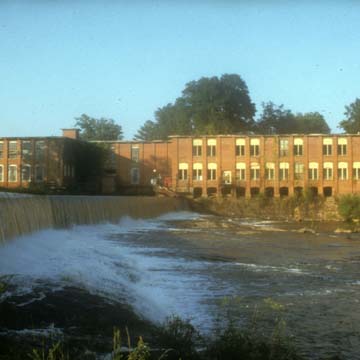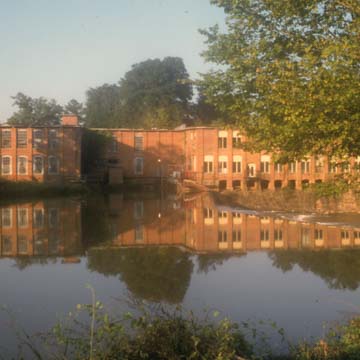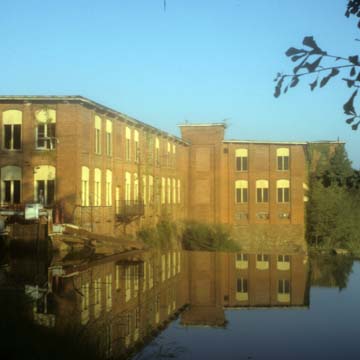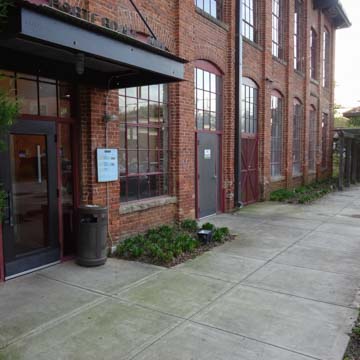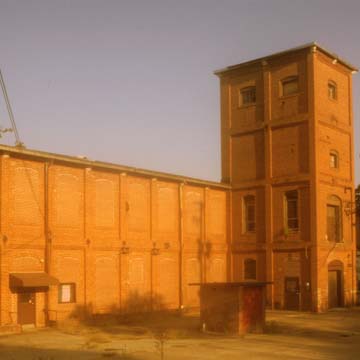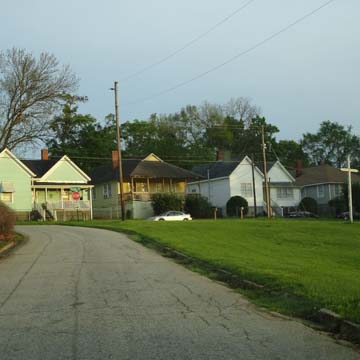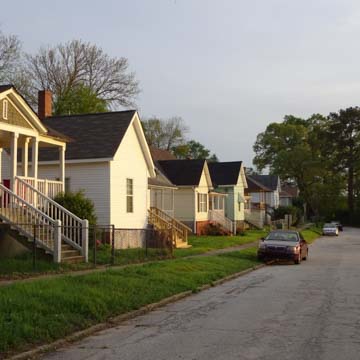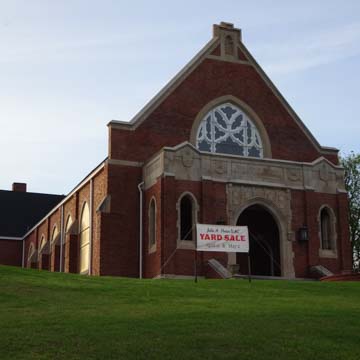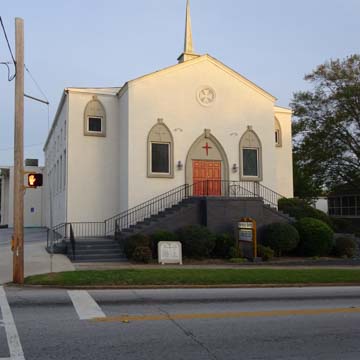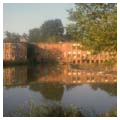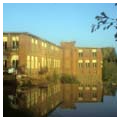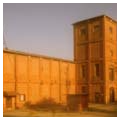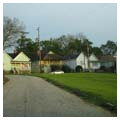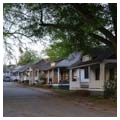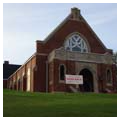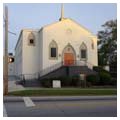The Porterdale Mill complex and mill village comprises a notable and representative example of industrial architecture, workers’ housing, and public architecture sponsored by mill companies during the first half of the twentieth century. The one-square-mile town of Porterdale, incorporated in 1917, is located about 35 miles east of Atlanta on the Yellow River. It was a mill village since its inception, with a typical patriarchal relationship between the mill owners and residents. Houses provided for mill workers, for instance, were regularly painted white, the color of choice utilized by the Bibb Manufacturing Company. The local labor force was almost exclusively linked to the mills and the production of twine.
Textile mill activity began in the area as early as 1835, when Noel Phillips of Connecticut built the first mill (no longer extant) on this Cedar Shoals section of the Yellow River. The river drops sixty-seven feet along a half-mile stretch here at Cedar Shoals, making this an ideal location for industry powered by water. The town was named for Oliver S. Porter, who bought the Phillips Mill and surrounding properties in 1870. Twenty-eight years later the Bibb Manufacturing Company acquired the mill and in 1899 erected the sprawling “new” or second Porterdale Mill complex on the north bank; these mill structures survive. In 1916, a third mill named Osprey Mill was built, and about four years later, the original Phillips Mill on the south bank of the river was replaced by the Welaunee Mill.
The 1899 and 1920 mill buildings are brick, each with a tower, and typically lighted by long rows of segmental arched windows. The Osprey Mill is the largest, covering two square blocks, and yarn and seine twine were manufactured within. During the early twentieth century, more cotton rope was manufactured at the Porterdale mills than anywhere in the world, and the mills provided most of the rope used by the United States Navy during World War II.
The mill village, built between 1899 and 1930, contains mostly bungalows, gabled ell houses, and saddlebags, nearly 300 in number, closely packed along streets laid out in grid pattern, with small yards, and consistent setbacks. The mill provided its workers other amenities and public buildings, including the Tudor Revival women’s housing unit and later Welaunee Inn (1923), the Julia Porter Methodist Episcopal Church (1925), Porterdale Baptist Church (1928), Porterdale Gymnasium (1938), and the W. D. Anderson Community Center (1950); retail stores and a hospital were also part of the village. The Rose Hill neighborhood provided housing for African American mill workers during the 1930s; they worshipped at the Mount Calvary Baptist Church. In 1964, the mill sold the houses to its workers, and both the Porterdale and Welaunee mills closed in the 1970s. Bungalows were sold mainly to landlords who failed to maintain them for low-income renters, and crime rose in the following decades, with the abandoned mills falling largely to ruin and the town’s population decreasing from a height of 3,207 in 1950 to 1,281 in 2000.
In 2006, however, rehabilitation of the mills and their conversion into loft apartments began to attract people and businesses back to the mill town. Pimsler Hoss Architects converted the over 200,000-square-foot main building into 135 loft apartments, with space for a 3,500-square-foot restaurant. A separate parking area was built within the brick walls of another nearby mill building. The cotton warehouse provided space for nineteen additional lofts and live/work units, a second restaurant, and retail storefronts along the road. A river flume running under the main building was waterproofed and restored and still runs a small electric power station that serves the complex. Pimsler Hoss Architects cleaned and repointed the brick exteriors of the mill buildings; restored the longleaf pine support beams and the southern yellow pine and maple floors; and installed custom windows to match original fenestration. In 2007, the project architects received a preservation award from the Georgia Trust for Historic Preservation.
This rehabilitation coincides with efforts to clean up the Yellow River, which has since become popular among kayakers. The National Park Service also designed a park along the river that links Porterdale to a major walking trail system. Porterdale has since experienced a revival of sorts, with individuals once again purchasing bungalows for owner occupancy. In the first decade and a half of the twenty-first century, the town’s population has increased by 14 percent.
References
“History.” City of Porterdale. Accessed August 14, 2019. www.cityofporterdale.com.
Shaw, Lucille Ivey. “The History of Porterdale From the Newton County History Reference.” Porterdale, Georgia. Accessed August 14, 2019. www.porterdalegeorgia.com.










